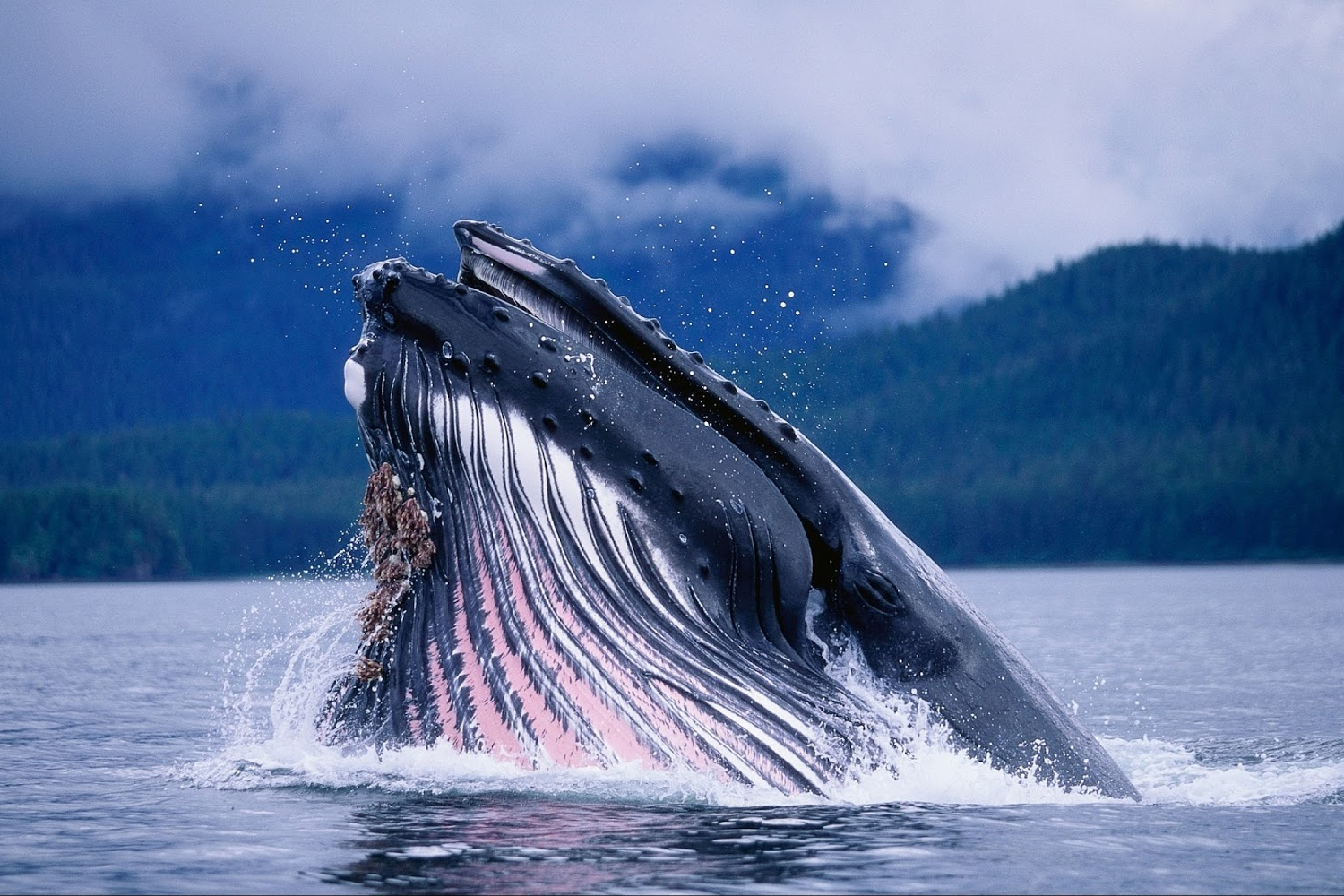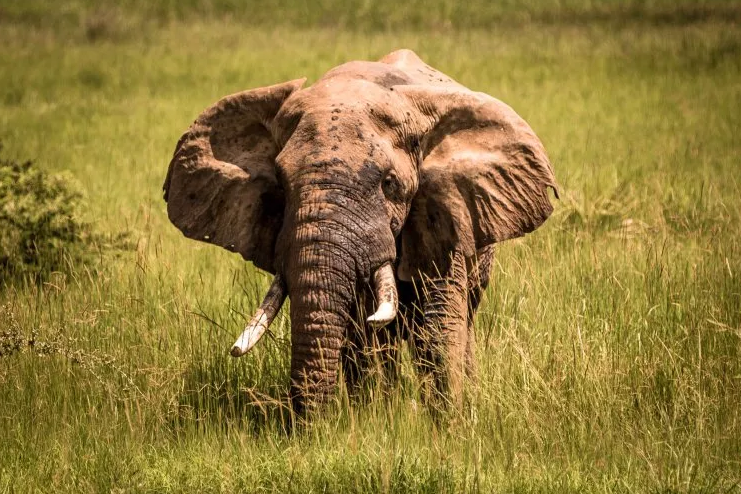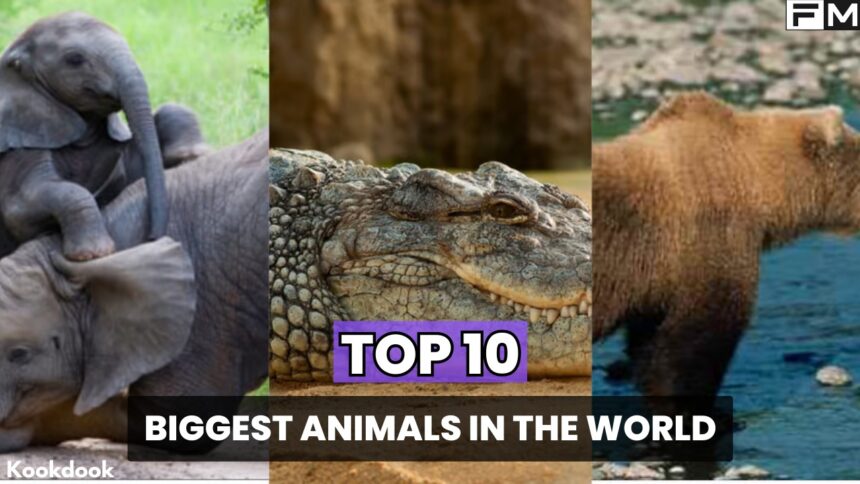The subject of the largest creatures on our planet intrigues both specialists and the general public alike. These immense beings showcase the incredible variety and resilience of life on Earth, and their significance spans across natural systems and human societies throughout the ages. Regrettably, a considerable number of these colossal animals are now facing endangerment. As a result, this article will delve into the top 10 biggest animals in the world.
Blue Whale

The Blue Whale claims the title of the largest animal on our planet. These magnificent creatures can grow up to an astounding length of 100 feet (30 meters) and can weigh as much as 200 tons (180 metric tonnes). Their immense size is a marvel, especially when considering their diet primarily consists of krill, tiny shrimp-like organisms, which they filter through baleen plates. Blue Whales are highly skilled divers, capable of descending to depths of 2,000 feet (600 meters) or more in search of their sustenance. Regrettably, they are classified as endangered due to historical hunting practices that severely impacted their populations.
African Elephant

Africa is home to the African Elephant, the largest land-dwelling animal on the continent and among the largest globally. These majestic creatures, adorned with long trunks and large ears, grace savannas, grasslands, and forests across 37 countries in sub-Saharan Africa. Adult male African elephants can weigh up to an impressive 6,000 kg (13,227 lbs) and stand as tall as 4 meters (13 feet) at the shoulder. The females, slightly smaller, can weigh up to 3,000 kg (6,614 lbs) and stand up to 3.5 meters (11.5 feet) tall. Their diet, consisting of grasses, fruits, and leaves, demands a substantial intake of up to 300 pounds per day to sustain their magnificent size.
Giraffe
The Giraffe stands as the tallest land animal globally, boasting males that can reach up to 6 meters (about 20 feet) in height and females up to 4.5 meters (about 15 feet). What sets them apart is their unique neck structure, comprising only seven elongated vertebrae, enabling them to access leaves and branches at towering heights. Their necks serve multiple purposes, from reaching food to engaging in mating season battles. Their ability to consume leaves from trees as high as 18 feet showcases their remarkable adaptability.
Hippopotamus
The Hippopotamus, often called “hippo,” is a heavyweight contender among land animals. These herbivorous creatures, found in swamps, lakes, and rivers, can grow to a length of 4 meters (13 feet) and weigh up to 1,500 kilograms (3,307 pounds). Recognizable by their barrel-shaped bodies and formidable heads, hippos are notorious for their territorial and aggressive behavior. Despite their massive size, they spend the majority of their time in aquatic habitats, making them a distinctive presence across sub-Saharan Africa.
Polar Bear
Surviving in the frigid Arctic region, the Polar Bear showcases its adaptability with its thick, white fur and blubber layer, ensuring warmth in the harsh climate. These carnivorous predators, primarily located in regions such as Alaska, Canada, Greenland, Norway, and Russia, can weigh up to 600 kg (1,323 lbs) and measure up to 2.5 meters (8.2 feet) long. Renowned for their swimming prowess, they navigate Arctic waters in search of their preferred diet: seals.
Saltwater Crocodile
Thriving along the coastlines of the Indo-Pacific region, the Saltwater Crocodile, also known as the “salty,” dominates its habitat with a maximum length of 6 meters (20 feet) and a weight of 1,000 kilograms (2,200 lbs). These reptiles boast impressive features, including a powerful head and jaws, a heavily armored body, and a rough hide that ranges from dark grey to brown. Their estuarine and mangrove homes have solidified their reputation as apex predators.
Ostrich
Native to Africa, the Ostrich claims the title of the world’s tallest and heaviest bird, with males reaching up to 2.8 meters (9 feet) in height and females weighing up to 100 kg (220 lbs). These flightless birds, recognized by their bare legs and pinkish necks, are renowned for their remarkable speed, capable of reaching up to 45 miles per hour. Their unique appearance and remarkable agility contribute to their distinction in the avian world.
Grizzly Bear
The Grizzly Bear, a subspecies of the brown bear found in North America, commands attention with its hump-adorned shoulders, lengthy claws, and characteristic facial features. These imposing creatures, prevalent in regions like Alaska, Canada, and certain parts of the continental United States, can grow up to 2.5 meters (8.2 ft) long and weigh as much as 600 kg (1,320 lbs). Their variation in coloration, from blonde to black, adds to their allure.
Giant Squid
Exploring the depths of the ocean, the Giant Squid, with its elongated body, large eyes, and impressive tentacles, earns its place as one of the largest invertebrates globally. Measuring up to 43 feet (13 meters) in length and weighing up to 1,100 pounds (500 kg), these deep-sea dwellers utilize their unique appendages to secure prey and navigate the underwater realm. Their remarkable adaptation to extreme conditions showcases the wonders of oceanic life.
Whale Shark
Roaming warm oceans, the Whale Shark stands as the largest fish globally, reaching lengths of 40 feet (12 meters) and weighing up to 20,000 pounds (9000 kg). Their unique appearance, marked by white spots and vertical stripes on a broad, flat head, makes them a remarkable sight. As filter feeders, they rely on plankton, small fish, and macro-algae for sustenance, embodying the delicate balance of marine ecosystems.
These extraordinary animals, each distinguished by its remarkable size, unique characteristics, and habitat, collectively showcase the breathtaking diversity of life on Earth. Despite their awe-inspiring presence, many of these creatures face significant threats from human activities and environmental changes. Conservation efforts play a crucial role in preserving these remarkable species for generations to come, ensuring that their grandeur continues to grace our planet.



